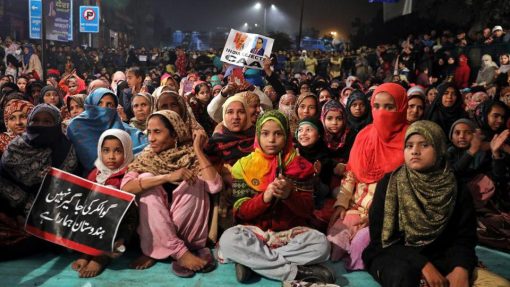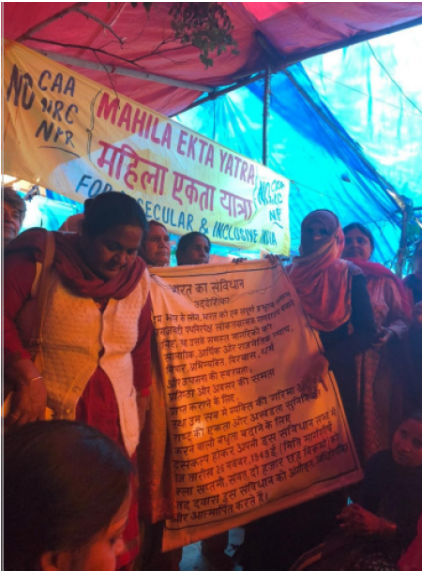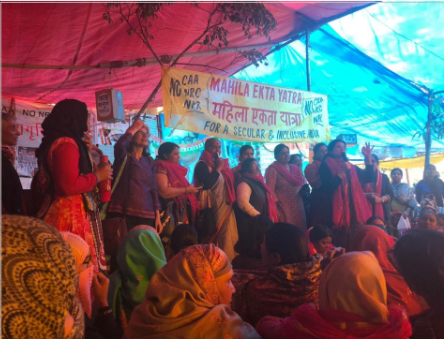
Protests against the Citizenship Amendment Act (CAA) in India are redefining resistance in a number of ways. However, perhaps the most important aspect is the enormous presence of women at the front lines. The recently concluded Delhi elections saw the very women at the center of a vicious campaign, from being labeled ‘sell-outs’ to being asked ‘why they are at the forefront’, tiding over the right-wing narrative of questioning women’s participation in protests.
After over 60 days of the ongoing resistance, 24/7 protest-sites in Delhi are going strong, with hope that the government will engage in a dialogue at some point. On February 14, a three-day long Mahila Ekta Yatra which concluded on February 16 began across 10 protest sites in Delhi in a show of solidarity.

Redefining Gender Roles, Standing Tall Together
“Whenever draconian policies come in place or when fascist forces rise, the worst affected are the women. We are standing up against this very oppression and the message is one of solidarity.” said Amrita Johri, one of the organisers of the march.
Over two months of resistance has been sustained through sisterhood. The movement against the discriminatory CAA has paved ways for women to discuss issues that unite them, ranging from domestic violence to sexual harrasment.
Across protest sites, many women were first-time protesters aiming to redefine gender roles thrust on them. Speaking to NewsClick, a protester from Chandbagh said: “We are asked why we are bringing children to a protest? Who will do the housework? We are redefining what it means to be a woman; we are leading a revolution on the ground.”
Activists on the ground said the fight against CAA is also one against the right- wing forces and their forms of domination of women and minorities. An essay penned by Anuraha Ghandy titled, Fascism, Fundamentalism and Patriarchy sums up the need for women to fight fascism. It states: “As the Hindu fascists promote the worst forms of brahmanical orthodoxy, their patriarchal approach, though it has taken the most degrading form against the minorities (particularly the Muslims and Christians), it is also manifest against womenfolk in general, in the promotion of dowry, sati, etc and the confining of the woman to the house, as a chattel for housework and production of children.”
Ghandy added that for revolutionary and democratic forces, and also for the interest of the progressive women’s movement, the tasks were to clearly laid out. “To fight the rise of the Hindutva fascist forces in India it is not sufficient to fight it only in the political realm, but to fight it on all fronts. The impact of these forces on women and their strategy for women has also to be countered,” she wrote.

Continuing the resistance, the Yatra commenced from Sunder Nagri on its first day, following which the protest march was stalled before reaching North-East Delhi’s Chand Bagh by the Delhi Police. When asked for orders, the police refused to furnish any concrete proof. The bus full of women was stalled at Gagan Cinema for over an hour and the protesters were allowed to reach Chandbagh only after legal intervention. Speaking to NewsClick, Annie Raja of the Communist Party of India said, “We are singing songs and reading the Preamble to the Constitution. Women are rising up against Brahamanical orthodoxy and discrimination that the government is unleashing on the people. The government is clearly rattled with us stepping up together, without any fear. It is why such tactics are being used,” she added.
The march went through Khureji, Azad Market and old Delhi’s Turkman Gate on its third day, covering Hauz Rani, Nizamuddin and Shaheen Bagh.




